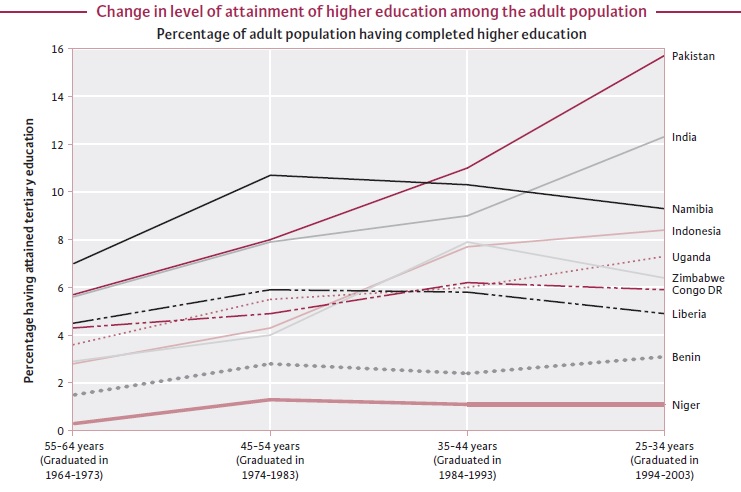Vinod2070
BANNED

- Joined
- Dec 24, 2007
- Messages
- 10,552
- Reaction score
- -2
- Country
- Location
While many Pakistanis continue to demonstrate a great deal of anxiety about their identity (leading to the identity crisis as explained by several Pakistani writers) and that makes them want to validate the two nation theory every day, every hour, every minute and sometimes every second.
The most important aspect of that validation process is to assume that Indian Muslims are doing worse than Pakistani Muslims. This is simply not true. Indian Muslims have benefited from the Indian growth story and liberal secular democracy along with other Indian citizens.
They enjoy better Indicators than Pakistani Muslims on every conceivable parameter, leave alone the far greater sense of security for every Muslim sect. In Pakistan, all minority sects like Ahmedis and Shia are under great threat. Their shrines are blown up with the worshipers. Around 20,000 Shia have been killed in sectarian killings, most of them after the 1980s.
Tarek Fatah: India is the only country where Muslims exert influence without fear - Times Of India
http://www.dailytimes.com.pk/default.asp?page=2009\04\10\story_10-4-2009_pg3_4
Daily Times - Leading News Resource of Pakistan
The most important aspect of that validation process is to assume that Indian Muslims are doing worse than Pakistani Muslims. This is simply not true. Indian Muslims have benefited from the Indian growth story and liberal secular democracy along with other Indian citizens.
They enjoy better Indicators than Pakistani Muslims on every conceivable parameter, leave alone the far greater sense of security for every Muslim sect. In Pakistan, all minority sects like Ahmedis and Shia are under great threat. Their shrines are blown up with the worshipers. Around 20,000 Shia have been killed in sectarian killings, most of them after the 1980s.
Tarek Fatah: India is the only country where Muslims exert influence without fear - Times Of India
http://www.dailytimes.com.pk/default.asp?page=2009\04\10\story_10-4-2009_pg3_4
We should be grateful that some Muslims remained in India and learned to compete. These Muslims are going to compete internationally and give us something to be proud of while our elites in Pakistan, who shun excellence and hard work, maintain their privilege and extravagance
Many of us watched the Oscars with a lump in our throats when AR Rehman was given a standing ovation by the American movie establishment. Rehman, a Muslim from a country we don’t consider friendly to Muslims, was eulogised by the Hollywood establishment, traditionally controlled by those of the Jewish persuasion. Rehman’s obvious talent overwhelmed them all. Jai ho!
Daily Times - Leading News Resource of Pakistan
Hafiz Muhammad Saeed, the self-confessed leader of the banned outfit Lashkar-e-Taiba, may think that Pakistan is the best Islamic nation for the Bollywood star, Shahrukh Khan to move to, but it is India that is arguably the best Muslim country today. Muslims in India enjoy complete political and religious liberty, a free legislative environment to undertake economic and educational initiatives, a vibrant television media and cinema that teach liberal coexistence, and access to a vast number of universities and institutes of modern education. There is absolutely no Muslim country that offers such a vast array of freedoms to its people.












